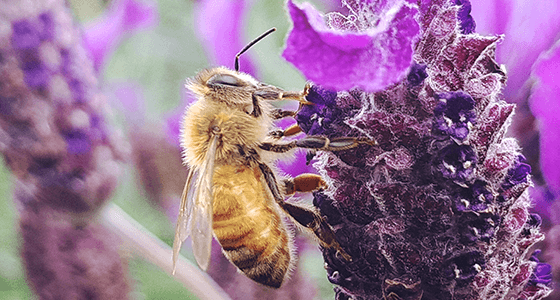The health and survival of bees is essential not just to the home gardener, but to our food production and economy. There are several things you can do to make their lives easier and ensure that they are still around for years to come.
Plant bee-friendly flowers and flowering herbs in your garden and back or front yard - bees are losing their habitats all around the world due to intensive farming practices, easy care and low maintenance sections that are devoid of pollen producing plants and the destruction of native bush and plant life. While the situation in New Zealand is not nearly as alarming as in Europe and the United States, we still need to protect our bees from these threats. Just by planting bee-friendly flowers in your garden, front yard, or in a planter you will help provide foraging bees with feed, and ensure they have a healthy, happy hive.
Avoid chemically spraying flowers while the flowers are in bloom as toxins may get into the pollen and nectar and be taken back to the hive where they can cause destruction. We recommend if you need to spray to do it early in the morning or after sunset. Look for natural alternatives that are equally as effective and not harmful to bees and wildlife. Palmers are committed to providing natural and organic options for a wide range of gardening problems, many of which are BioGro certified, meaning you can be assured they have gone through a rigorous audit process that verifies the products organic claim. If you’re not sure about which natural and organic products are available or what you can use them for, your local Palmers experts will be able to help you choose the right organic product.
For generations we’ve been told to eliminate weeds as soon as they surface, but for bees, weeds are good! A lawn full of clover and dandelions is a haven for honeybees (and other native pollinators too); so don’t be worried about letting your lawn and garden go a little bit wild from time to time. Wildflowers, many of which we might classify as weeds, are some of the most important food sources for bees. If some of these are “weeds” you chose to get rid of, let it bloom first for the bees and then before it goes to seed, pull it out or trim it back.
On the varietals front, plant plenty of the same type of bloom together as volume will attract the bees to forage. Some bee-friendly plant varieties include lavender, rhododendrons, hydrangea, dahlia, heliotrope, sage, fennel, manuka & hebes.
Bees are thirsty wee things and a clean supply of water is absolutely essential for the operation of the colony. Bees use the water for keeping the hive at a constant temperature. Put a small basin of water around your garden. If you have a lot of bees that are starting to come to your new garden of native plants, wildflowers and flowering herbs, put a little bird bath with some stones in it for them to crawl on - they will appreciate it!

